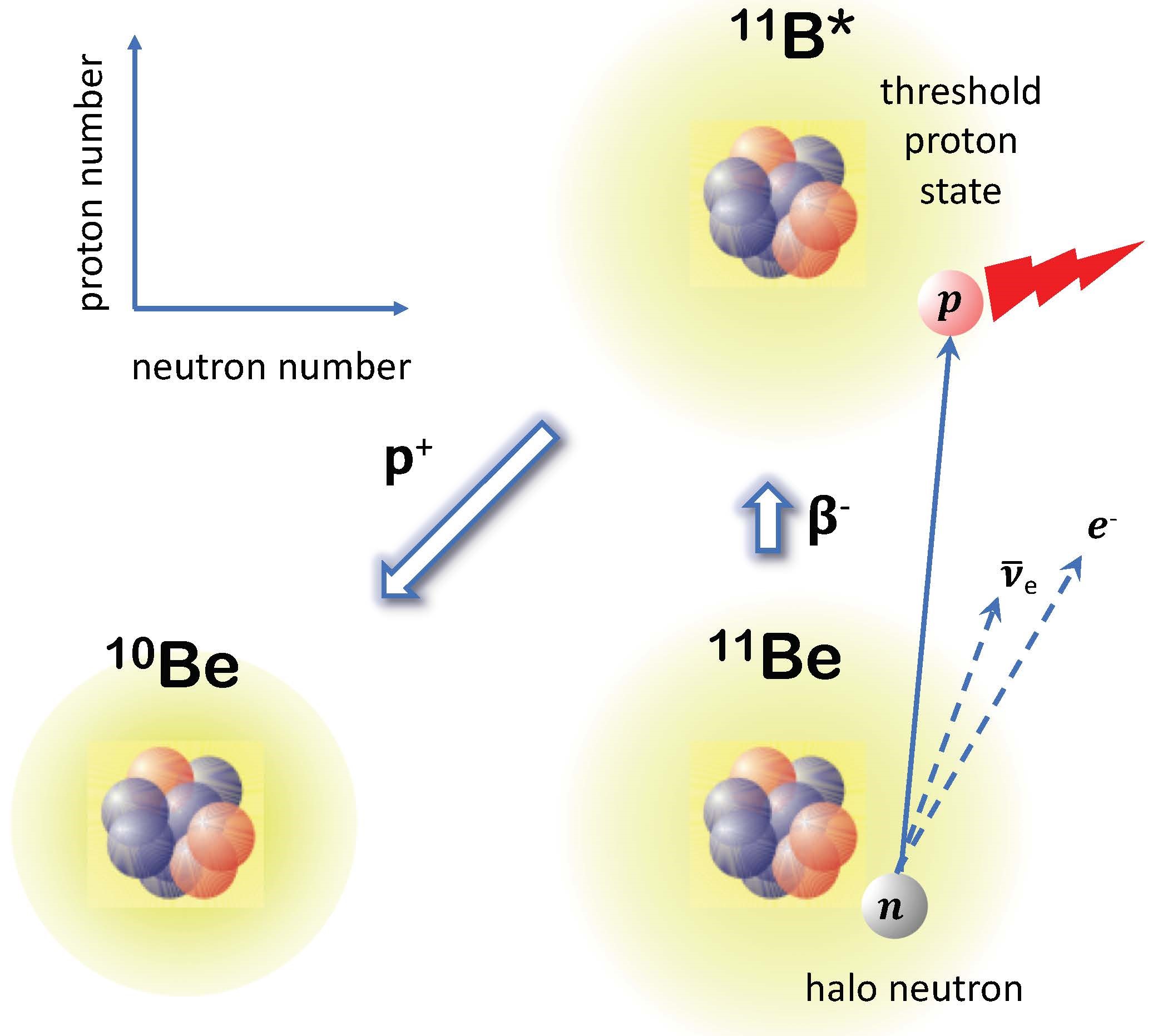Convenient location of a near-threshold proton-emitting resonance in boron-11
Nuclear clustering is arguably one of the most mysterious nuclear phenomena. Numerous examples of cluster-like weakly-bound and unbound states in light nuclei can be found in the proximity of particle decay thresholds. These include the ground state of the Borromean halo nucleus 11Li and the famous Hoyle resonance in 12C that is indispensable for the synthesis of heavier elements in stars. Theoretically, it was argued that the appearance of such states is a generic phenomenon in any open quantum system, in which bound and unbound states strongly mix. In the recent paper, published in Phys. Rev. Lett., theorists from INP Cracow, GANIL, and FRIB tackled the recently-reported beta-delayed proton emission of the neutron halo ground state of 11Be. The puzzling decay has been explained by the existence of a resonance with total angular momentum and parity Jp=1/2+ in 11B, carrying many characteristics of a nearby proton-decay channel.

Figure: The beta-delayed proton emission of 11Be. The neutron halo ground state of 11Be undergoes beta decay to an excited state of 11B, which lies just above the proton-decay threshold. This state subsequently decays to 10Be by emitting a proton.



